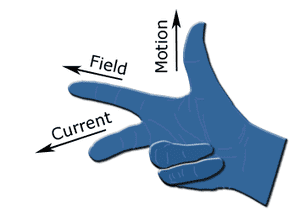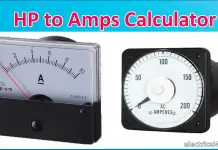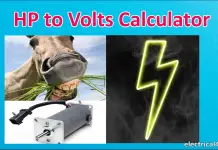Fleming Right Hand Rule:
Two important rules are mainly used; one if left-hand rule and another is right-hand rule. Let see the detail about both rules.
History:
Fleming’s Right-Hand rule is mainly applicable for the electric generator and Fleming left-hand rule is applicable for an electrical motor. In the late 19th century, John Ambrose Fleming introduced both these rules and as per his name, the rules are well known as Fleming’s left and right-hand rule.
Fleming right-hand rule:
Fleming’s Right-hand Rule is used in generators. The rule shows the direction of induced current when a conductor attached to a circuit moves in a magnetic field. Fleming right-hand rule can be used to find out the direction of current in a generator’s windings when a closed circuit. The EMF is induced in the coil due to Faraday’s law of induction. And the direction of the current flows in the generator winding comes to know from Fleming right-hand rule. Normally A coil or conductor has two possible currents.
Fleming right-hand rule says about the direction of the current flowing to the external circuit (the source to load).

[wp_ad_camp_1]
The right hand is held with the thumb, index finger and middle finger mutually perpendicular to each other (at right angles), as shown in the diagram.
The thumb is pointed in the direction of the motion of the conductor relative to the magnetic field.
The first finger is pointed in the direction of the magnetic field. (north to south)
Then the second finger represents the direction of the induced or generated current within the conductor (from the terminal with the lower electric potential to the terminal with higher electric potential, as in a voltage source)
Normally two confusing will come into the picture while remembering Fleming rules
- Finger confusion
- Rules of application confusion
Easy Way to Remember Fleming right-hand rule (Avoid Finger confusion):
Thumb in Right hand => Direction of the conductor (Force F)
First finger in the right hand => Direction of the magnetic field (Flux density B)
The Second finger in the right hand => direction of the current flows (Current I)
Simply just remember the bold letter which creates “FBI”, standing for Force (or Conductor motion), B the symbol for the magnetic field, and I the symbol for current. The subsequent letters correspond to subsequent fingers, counting from the top.
Thumb => F;
First finger => B;
Second finger => I
Key Points:
- Fleming right-hand rule gives the direction of the current.
- The same rule is used in the generator
[wp_ad_camp_1]
Avoiding confusion:
Here the right-hand rule is used in the generator and left-hand rule is used in the motor; To remember this, “right”, the letter “g” is the first letter of the generator, by this, you can easily remember the right-hand rule is used in the generator. So if you know anyone rule of correct application, remaining you can easily find it. Hence,
Fleming Right-hand rule => generator.
Fleming Left-hand rule => Motor.
Simple easy to understand:
In many application, the motor is used as the generator and the generator is used as the motor. Example: Car generator, DC Motor, railway traction system, A centrifugal machine etc.
How?
To illustrate how to consider that many types of electric machine can be used as motor as well as the generator. Motoring action is used to accelerate a vehicle but applying a battery voltage across the machine. If the motor is then disconnected from the charged battery, and connected instead to a completely flat battery, the vehicle will decelerate. The motor will act as a generator and convert the vehicle’s kinetic energy back to electrical energy, which is then stored in the battery. Since neither the direction of motion nor the direction of the magnetic field (inside the motor/generator) has changed, the direction of the electric current in the motor/generator has reversed.












![What is Arc Chute? Types, Working Principle [Video Included] arc chute working priciple](https://www.electrical4u.net/wp-content/uploads/2020/06/arc-chute-218x150.png)